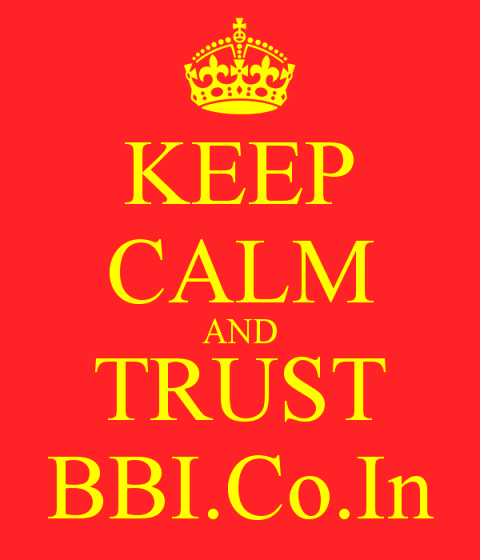What is Human Resource Management All About?
HRM or Human Resource Management deals with management of the human resources of a company. The Human Resources or employees are the most important assets of any company and in order to look after them the HR department is formed. The HR department unlike popular misconception isn’t just a department that looks after hiring and firing of people in the organization, it actually looks after the entire working of a company’s work force.
This department is the most vital department in a company and thinking otherwise is a mistake. As far as the subject HRM in banking and insurance is concerned it deals with the recruitment, management, training and development of personnel in the banking sector. Human Resource Management is very easy to learn and understand but a lot of the terminologies and concepts are similar and hence students end up confusing them and scoring fewer marks in their exam, then what they could.
What is the Syllabus for Human Resource Management (Banking and Insurance)?
- Human Resources Management
- Personnel Policies
- Participative Management
- Human Resource Management in Banks and Financial Institutions
- Human Resource Management in Insurance Sector
- Corruption, Frauds, Scams in Financial Institutions
- Case Studies
A few Concepts explained in simple terms:
Human Resources Management: Human Resources Management focuses on managing the Human Personnel in an organization. This department helps in maximizing employee performance and helping meet the organizational goals. Its activities include recruitment, training, development, performance appraisal, rewards, maintaining industrial relations, balancing organizational practices and aligning with industrial bargaining and government laws.
Personnel Policies: Personnel Policies are like plans of actions or strategies created by the HR Managers in order to help them plan the working of their personnel. They are like action guides and are in synchronization with an organizations, plans, policies and objectives.
Participative Management: Participative management is the form of management in which employees at all levels are encouraged to participate in the decision making of the business. Everybody’s opinions are considered as compared to the old practice of only a few board members taking a decision the entire work force gets a chance to contribute towards the decision making process of the company, it encourages the employees to feel a part of the system and helps them connect with the organization at a deeper level.
Human Resource Management in Banks and Financial Institutions: This section talks about the various issues affecting the HR department while dealing with employees of a bank. In a public sector bank the issues faced are very different from a private sector bank; the public sector faces issues of training and updating technology, transfer of job to any branch across the country or the fact that each desk needs to have a specified job responsibility.
While the private sector runs exactly like any normal private sector organization runs and faces its own share of problems like poaching of staff by competitors, or high rate of staff turnover due to excessive stress and targets, it is the public sector that struggles more to get its human resource managed as compared to the private sector banks.
Human Resource Management in the insurance sector: HRM in the insurance sector has to deal with a lot of work force management as the number of insurance policy takers are increasing by the day. The problem that this sector faces is competition in huge numbers due to globalization and hence retaining good employees and ensuring that have a balanced work life which will keep them grounded to the company is what matters. New talent is immediately poached by the private sector, global players and it’s the public sector insurance companies whose HR departments have to work the hardest.
Corruption, Frauds, Scams in Financial Institutions: India is a corrupt nation and the level of corruption entwined in our nation’s roots is no secret, when our ranking on the corruption index improves from 94 to 85 we jump with glee, but do we actually realize how grave an issue this is for us as citizens of the country? The banking and finance sector is no exception to this huge net of corruption weaved around it, this part of your syllabus deals with numerous corruption, frauds and scams in the world of banking and finance.
The 5 most popular financial scams in India:
- NSEL scam
- Harshad Mehta scam
- Roop Bhansali scam
- Ketan Parekh scam
- Satyam Scam
How to Study this Subject?
You can use the Google method to learn this subject:
The Google method:
The Google method is a very interesting method for the internet generation that we are. When you need information on a particular subject what you end up doing is:
- Hitting the Google search bar
- Reading through the best link in front of you to know what the page is talking about.
- Clicking on sub links that help you understand things in details and finally
- Check out some extra details in the news section to ensure you know what is currently happening with regards to your topic of interest.
You can apply the same method for studying an entire theory based subject from start to end in a way that it gets completed and does not bore you to death in the process.
- Take up the text book of your choice (you’ll have plenty of options in the market for any particular subject.
- Follow it up by reading it like you would scan a web page or a novel to understand what it talks about, you need not really understand everything that you read in depth but try and grasp as much as possible.
- Take up past university question papers or college/classes papers and learn those answers well, these act like the sub links that give you appropriate and in-depth information.
- Follow it up by doing your answers to the questions that are provided at the back of each chapter, which will be like reading Google news to know whatever is left out of the topic.
In case you are short on time you can follow the LSDC method to study this subject with ease.
The LSDC method is as follows:
The LSDC concept is for people who wish to study exactly from the exam point of view or who have a few days left to their exams and hence want to study to score with a limited time line at hand.
LSDC stands for Long answers – Short answers – Distinguish between and Concepts.
This is the order to be followed while studying any theory chapter. While you study the content in order from the largest in size to the smallest, you start studying for the long answers and you tend to cover a lot of matter which helps you learn a few of the short answers and concepts as a part of the given long answer.
Similarly with every answer greater in length a minimum of one answer that is shorter gets covered up, and helps you complete your syllabus within a short period of time.
Are there any Career options in this field?
You can do a Post Graduation in HR by an MBA or an MS and secure a job in the HR dept of a Bank or an Insurance company. These jobs pay very well and have a good scope for career growth.
All the best, do well 🙂
BY AMI PANDYA









Leave a Reply